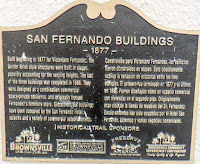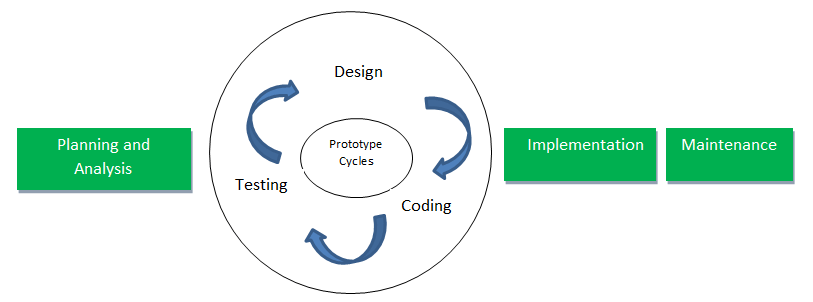A CEO’s commitment often arises from his or her own understanding of what it means to be an outsider. Take Andrea Jung of the personal-care-products firm Avon. (Note that Jung, like a number of other CEOs we talked with, has stepped down since our interview with her.) Describing her career, she said: “I was often the only woman or Asian sitting around a table of senior executives.
I experienced plenty of meetings outside my organization with large groups of executives where people assumed that I couldn’t be the boss, even though I was.” MasterCard’s CEO, Ajay Banga—a Sikh from India who was hassled in the United States after 9/11—shared something similar: “My passion for diversity comes from the fact that I myself am diverse. There have been a hundred times when I have felt different from other people in the room or in the business. I have a turban and a full beard, and I run a global company—that’s not common.”
Carlos Ghosn of Nissan Motor Company told us how bias had affected his own family. “My mother was one of eight children,” he said. “She used to be a very brilliant student, and when the time came to go to college, she wanted to become a doctor. Unfortunately, her mother had to explain to her that there was not enough money in the family, and that the money for college was going to the boys and the girls would instead have to marry.
When I was a kid and my mother was telling me this story—without any bitterness, by the way, just matter-of-fact—I was outraged because it was my mother. After hearing that story, I said I would never do anything to hurt someone based on segregation.”
To Ghosn, gender bias is a personal affront. “When I see that women do not have the same opportunities as men, it touches me in a personal way,” he said. “I think it’s some kind of refusal related to my sisters or to my daughters.”
Even white male CEOs had stories to share. Kentucky native Jim Rogers of the electric-utility holding company Duke Energy felt like an outsider at the start of his career. “When I went to Washington to be a lawyer, I felt like I had to work harder, be better, and prove myself because I had a southern accent and came from a rural state,” he said. The self-awareness, insight, and empathy that Rogers and other chief executives acquired from personal experience have clearly shaped their attitudes toward diversity and inclusion and informed their priorities as leaders.
Persistent Institutional Barriers
The CEOs were generally disappointed with the lack of progress on diversity in the C-suite. While several women have risen through the ranks to become leaders of multibillion-dollar corporations, the statistics are grim overall. Only 4% of companies on the 2013 Fortune 500 list are led by female CEOs. As Banga acknowledged,
“That’s more than what it used to be 20 years ago, but it’s nowhere near where it should be.” The disparity also persists in other senior leadership positions and on boards. Ken Frazier of Merck offered a harsher assessment: “I think that the progress of women in the last two decades has been so limited, so slow, so inadequate, that it would defy even the most skeptical people from 20 years ago.”
We asked the CEOs what they perceived to be the greatest obstacles to women’s advancement in their own companies and industries. Although there’s no one truth about what holds women back, the leaders we spoke with offered candid views based on years of observation.
If there’s a single barrier that affects all women, it’s exclusion from networks and conversations that open doors to further development and promotion, according to seven of the CEOs. Woods Staton of Arcos Dorados, the largest operator of McDonald’s restaurants in Latin America, defined the offending mechanism as “social cliquishness,” a pattern of interaction in which men seek out the company of other men and ignore women.
“The men come out of a meeting, hang out with each other, and then go out at night for drinks,” Staton explained. “It’s subtle discrimination, and it’s difficult to work around.” Barry Salzberg of the professional services firm Deloitte described this pattern as a tangible, negative consequence of “the old boys’ network.”
Frazier went so far as to say, “I’m an African-American, and I’ve worked in the business world all my life, and I believe very strongly that whatever barriers race presents in the workforce, they pale in comparison to the barriers that women face when creating the close mentoring relationships that are necessary to be promoted.” We find that this kind of discrimination is often unintended, unconscious, and embedded in a company’s culture.
The CEOs also reported that the contributions of women are often underappreciated. As an example, Jim Turley of Ernst & Young described an incident when he himself was called out: “I like to facilitate our board discussions by getting right into the more contentious points, and we were having a discussion around a particular topic. Three women on the board made individual comments that were similar in direction, which I didn’t respond to.
Not long after they spoke, a fourth person, who happened to be a man, made a comment in line with what the women had been saying, and I picked up on his comment. I said, ‘I think Jeff’s got it right,’ not even aware of what I had just done. To their great credit, the women didn’t embarrass me publicly. They pulled me to the side, and they said, ‘Jim, we know you didn’t mean for this to be the way it was received, but this is what happened.’ They played it back to me, and they said that that’s what happens to women throughout their careers. It was a learning moment for me.”
Clearly, even leaders passionate about building inclusive cultures can inadvertently allow unconscious biases to shape their behavior.
Five of the CEOs asserted that unexamined assumptions also constrained women’s chances to progress. As Frazier explained, “If a job requires a woman to travel a lot, sometimes people decide preemptively that she’s got a young child at home—this won’t be something she’s interested in.”
Double standards can also trip up women in line for promotions, as when characteristics prized in male leaders are viewed as negative qualities in women. “When men come into the environment and they’re tough, they’re perceived as strong business leaders,” said Block. “When women come in and they’re tough, it’s not always as valued.”
Geographic immobility due to family constraints was another problem, mentioned by three of the CEOs. “People often require geographic mobility to get the appropriate amount of exposure to the various aspects of the business that they need to understand,” Randall Stephenson of AT&T noted.
“As managers mature, we observe that some female managers get to a place where they want to begin families or their spouse also works, which makes them less inclined to move and physically relocate their families.” Jung concurred: “In my experience, where part of career development and part of talent management was getting a ‘global passport’ stamped, one of the barriers for women could have been mobility. I saw that beyond the opportunity for the individual, we also had to try to create all of the opportunities necessary to make sure the whole family could in fact move.”
Another three CEOs cited insufficient support for women who were rejoining the workforce after taking time off to raise children. Any organization that hopes to encourage women to succeed needs to address that, noted Rogers. “If a woman is pregnant and leaves, you have to have the flexibility to allow her to do that but not lose her place or her momentum,” he said.
Unsurprisingly, five CEOs brought up barriers related to childbearing and child rearing, and six mentioned a lack of flexible work hours. They observed that the push-and-pull between work and family, though increasingly an issue for men too, remains predominantly a barrier for women. George Chavel of Sodexo North America drove home that point, asking, “Why should women have to be superhuman, have these reputations of ‘They can do it all,’ and make these major sacrifices, and men don’t have those kinds of expectations placed on them?”
Do Women Lead Differently?
Eight of the CEOs perceived a distinction between male and female leadership styles. Though social scientists may not agree with their take on things, the CEOs said that women were less political, less likely to define themselves by their careers, more collaborative, better listeners, more relationship-oriented, and more empathetic and reasonable. We also heard that women were more likely to focus on completing the job at hand and to neglect to position themselves for recognition or promotion, while men were more apt to seek attention.
This tendency not to assert themselves could hold women back. George Halvorson of the California-based managed-care consortium Kaiser Permanente explained the problem this way: “There are cultural barriers, in that leaders who are looking for the next generation of leaders, for the people to promote, are less likely to see and understand the capable women that they have in their shop, probably because the male style tends to focus more on being in the spotlight, and the female style tends to focus more on bringing people together to get things done.
The very thing that makes the best female leaders very successful also makes them less visible, and that’s an incredibly important distinction. A good leader knows to look for things that have gone really well and then drills down to find the person who really did it, as opposed to just looking for whoever has a lot of accolades and did the dance.”
But some differences in leadership style can work to women’s advantage, said several CEOs. “When you’ve got a complex project involving multiple layers, you need a leader who is collaborative, and more often than not I have found that leader to be a woman,” said Halvorson.
What Is an Inclusive Culture?
Resoundingly, the CEOs agreed on what an inclusive culture meant for their organizations. They defined it as one in which employees can contribute to the success of the company as their authentic selves, while the organization respects and leverages their talents and gives them a sense of connectedness.
“In an inclusive culture employees know that, irrespective of gender, race, creed, sexual orientation, and physical ability, you can fulfill your personal objectives by aligning them with the company’s, have a rich career, and be valued as an individual. You are valued for how you contribute to the business,” said David Thodey of Telstra, the Australian telecommunications firm. Brad Wilson of Blue Cross and Blue Shield of North Carolina described an inclusive workplace as “one where all who come with the professional skills sufficient to perform the requirements of the job feel welcome, supported, and rewarded, and are inspired to succeed based on their ability.” That’s similar to the point that John Rowe of Exelon, a U.S. energy producer and distributor, made when he noted that a culture of mutual respect helps his company address the complexities of its business. “A big organization needs only a few generals and a lot of sergeants,” he said. “The sergeants deserve respect too.”
Some CEOs observed that the proof is not only in how individual employees feel about opportunities for growth but also in how teams operate and decisions are made. “In an inclusive culture, we create and support heterogeneous teams,” said Chavel. “They may take longer to make decisions than homogeneous teams, but it’s worth the investment because their decisions will be better informed.”
To these CEOs, inclusiveness is not merely a matter of the composition of the organization or of particular teams (though such metrics can be helpful); it also has to do with how people relate to one another. “Broad diversity is necessary, but if you just walk away after you have it, you may not get the outcomes you want,” said Steve Voigt of King Arthur Flour, a company where women account for three of eight board members and three of six senior executives. “You really have to manage it, grow it, and educate around it.”
Practices That Make the Difference
Turley drew an important distinction: “Diversity itself is about the mix of people you have, and creating an inclusive culture is about making that mix work.” We asked the CEOs which of their organizations’ practices had been most effective at harnessing diversity. Here’s what they told us:
1. Measure diversity and inclusion.
The CEOs agreed that metrics are key because, as we know, what gets measured gets done. Bank of America, for example, puts questions about diversity and inclusiveness into its biannual employee engagement survey and compares the results for any team that gets at least seven responses against those of a normative group of companies.
“We’ve also built a diversity-and-inclusion index that tells us if people here feel they are treated fairly and to help us ensure that people of diverse backgrounds can succeed at Bank of America,” said Moynihan. “With this data, each team can have a dialogue to determine what we’re doing well and what we can improve to make Bank of America a better place to work.”
2. Hold managers accountable.
Merck, Nissan, General Mills, Telstra, and ABB North America are among the many organizations that make diversity and inclusion goals part of their managers’ performance objectives. “Each of my direct reports has things that they’re going to do personally to help promote diversity, not things that they can assign to their team,” explained Moynihan. “I say, ‘What are you going to do to get involved?’ For example, they can mentor somebody individually or sponsor diversity events.” AT&T takes a different approach. “We benchmark diversity objectives at the senior levels of management, and we have regular meetings around my table about how we’re advancing,” said Stephenson. “A portion of our officers’ compensation is based on achieving those objectives.” Many CEOs also reported that managers who embraced diversity were more likely to be considered for promotion at their companies.
In some organizations a favorable attitude toward diversity even determines whether an employee is viewed as a good fit for the organization. “We really have challenges when the leadership group is not diverse and they don’t get it. And so you have to educate them—and if they still don’t get it, I let them go,” said Tim Solso of the engine manufacturer Cummins.
He elaborated: “We hit a serious downturn in the second half of 2000 through the first half of 2003. I mean, we were on the brink as a company, but I didn’t back off on diversity. One of the senior officers basically said to another officer, ‘Why doesn’t Solso get off this diversity stuff? We need to save the company.’ I fired him. It was well known why he was fired. After that, people either got it or didn’t talk that way anymore.”
3. Support flexible work arrangements.
Many of the CEOs reported that their organizations offered benefits that helped employees balance their professional and personal commitments—such as flexible hours, on-site child care, and onboarding support after a leave of absence.
Ken Powell of the U.S. food processor General Mills explained his company’s efforts this way: “I’ve had officers at General Mills say to me, ‘I realize that I’m one of several people who could be the brand manager for Cheerios, but I’m the only person who can be the mother to my children.’ While some of those women make the decision to leave the company—sometimes permanently—we’ve learned that we can retain many of them by providing greater flexibility during those hectic childbearing years.”
At Sodexo North America, Chavel and his leadership team have made work/life balance a personal matter. “Although the job is 24/7, I try to send the message that I’m open and receptive to any kind of flexible arrangement,” Chavel said. “For example, I will end a meeting early to get to one of my sons’ athletic events or travel somewhere for a family commitment.”
4. Recruit and promote from diverse pools of candidates.
Workforce diversity begins with the search for talent. At General Mills, Powell’s leadership team tracks metrics during and after the hiring process. “From the beginning, we’re looking at the composition of the pool of candidates that we interview on campus, because that’s an important early indicator,” Powell told us. “Then we look at the composition of the group of people we hire in any given year. We track the retention rate for different groups, such as women or African-Americans.
Even interns. At what rate are they leaving? At what rate are they getting promoted? What percentage advances to each level in the company? Our metrics help us diagnose and understand what’s going on—enabling us to develop action plans to address any issues we see. It’s important, and that’s why I review those metrics myself on a quarterly basis.”
Ghosn has taken a different approach at Nissan in Japan, where women are strikingly underrepresented in management ranks. “We’ve implemented quotas in hiring, particularly in the populations where there are fewer women—like engineering—and we make sure that in the succession plans of the company we always have a specific number of female candidates,” he explained. “This forces management to identify women in their own ranks or to hire more women.
So when it comes time for promotions, we have a diverse group of candidates from which we can choose. I believe quotas are a great way of advancing diversity, particularly when you have a long way to go and you don’t want to wait forever. After a company attains a certain level of diversity, I think quotas lose their effectiveness. But when you’re moving from 1% female managers to 5%, if you don’t enforce a quota, it’s going to take forever to reach that number.”
Owing in part to this strategy, the representation of women in Nissan’s management has increased three times as fast as the average rate in Japan over the past decade.
5. Provide leadership education.
Another key practice is providing leadership development opportunities for women at the lower levels of the organization, which tend to be more diverse. Broomberg described Discovery Health’s CEO Program like this: “It’s a brilliant two-year program which involves candidates in intensive internal and external training, significant exposure to senior executives, and travel to the U.S. to do a course at Duke.
It includes external candidates and young candidates from previously disadvantaged backgrounds already in the company. It’s a big financial investment for us, but we’ve been able to add quite a lot of muscle to our recruitment capacity and also invest significantly in the more rapid advancement of existing internal candidates.”
And Johnson & Johnson’s Bill Weldon noted that diversity training cannot be hived off from the rest of the operation. It has to be woven into the culture. “About 10 years ago one of the women’s leadership initiative programs was being held across the street, and I asked the people running it if I could go to the program,” he recalled.
“They said no. I asked why not, and they said I couldn’t go because I was a man. My response was that that may be the problem—you have to broaden it beyond women. We evolve and learn and grow to make sure we’re capturing not just the people involved but the views of the whole community.”
Needless to say, companies should also offer their high-potential employees opportunities for external education and development. But according to Harvard Business School, only 23% of participants in executive education programs on the Boston campus in 2012 were women. Companies also need to invest in women-only leadership development programs and in educating both men and women about subtle gender biases and how they manifest themselves in firms.
6. Sponsor employee resource groups and mentoring
programs. Several of the CEOs’ companies offered less structured professional development opportunities to various subgroups of employees. One approach is employee resource groups, or networks of employees who share an affiliation (such as women, ethnic minorities, or young professionals).
Angela Braly of the U.S. managed-care firm WellPoint underlined the importance of leveraging such groups in substantive ways. “I visit each group twice a year and give them real assignments,” she said. “I am very clear about my expectation that they will have a real impact on the business.”
Companies must also invest in these groups, according to Banga. “Here at MasterCard we have many business resource groups, or BRGs,” he said. “We have women’s leadership networks, a YoPro group for young professionals, a group for employees of African descent, a pride community, a Latino community, and an ‘East’ community for Asian employees.
Each BRG has a business sponsor, who’s normally a direct report of mine. We do a ton of things with them, from employee-networking events to multicultural summits to a women’s forum for which we get outside speakers as well as panels comprised of me and members of my board.”
7. Offer quality role models.
It’s no surprise that diversity at the top promotes diversity throughout an organization. A varied array of leaders signals an organizational commitment to diversity and also provides emerging leaders with role models they can identify with.
Several of the CEOs, including those from Kaiser Permanente, Sodexo North America, King Arthur Flour, Duke Energy, and Cummins, said that putting women in leadership roles was key to attracting, retaining, and developing other female talent. Rogers described how Duke did this: “This historically has been a man’s industry. So, early on, we worked to move a woman into a plant manager position. That set an example.
You have to be intentional and make sure you populate your organization with leaders who represent diversity. That creates an environment that allows those with diverse backgrounds to say, ‘If they can, I can.’ That is a very important feeling that needs to be embedded in the people in the company.”
As for individualized employee development, many CEOs cited the importance of mentorship and sponsorship opportunities. Ohlsson explained IKEA’s unique approach to mentorship this way:
“We have a grandfathering/grandmothering principle at IKEA—that is to say that a hiring boss has to have another manager say yes to a candidate before that person can be hired. Two people then share the responsibility for the development of that individual.” Such double sponsorship increases the likelihood that talented employees of any background will feel supported and stay with the company.
But Halvorson warned against tokenism—the practice of putting people into jobs because of their classification, not their ability. “If you put someone in place who fits a certain category but doesn’t have the skill set needed to do the job, then you basically set the whole agenda back significantly,” he said. “My sense is to hire stars, and the constellation is far more effective if it’s a diverse constellation.”
8. Make the chief diversity officer position count.
As this relatively new role proliferates across industries, CEOs must decide how to maximize its effectiveness. At the time of his interview, Enrique Santacana of ABB North America had just received approval from the firm’s North America Executive Committee to create a chief diversity and inclusion officer position, reporting directly to him. “We want to make sure that people understand that it has full support from the top, and it’s not just a communications message that goes out there with no follow-up,” he explained.
“It institutionalizes the process and the intent, and it establishes a formal means by which we will develop programs as well as metrics, so that we can track our progress.”
Lead by Example
Once the vision of an inclusive culture has been articulated and best practices have been put in place, what is the CEO’s daily contribution to seeing that the vision becomes a reality? Nearly half the CEOs said their most important role was to set the tone for the organization’s culture by demonstrating a commitment to inclusion.
Perhaps the most meaningful way to do that is by dedicating time to work personally on diversity and inclusion initiatives. A quarter of the CEOs we interviewed mentioned direct involvement with diversity programs, such as meeting regularly with employee resource groups and diversity councils.
Banga, Moynihan, and Thodey even chair diversity and inclusion councils themselves. By pointing the way, CEOs will help their organizations attract and develop the best, most diverse talent, giving them the edge they need to succeed.

![]() , assistant professor at the Haas School of Business, UC Berkeley.
, assistant professor at the Haas School of Business, UC Berkeley.![]() , is primarily to count the number of a person’s connections to assess his or her ability to influence others.
, is primarily to count the number of a person’s connections to assess his or her ability to influence others.![]() , was presented at the Marketing Science conference in Istanbul. Its key findings:
, was presented at the Marketing Science conference in Istanbul. Its key findings:





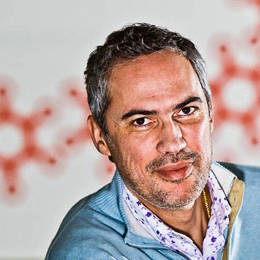

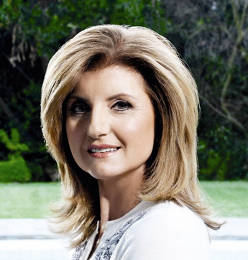
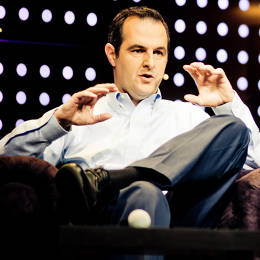












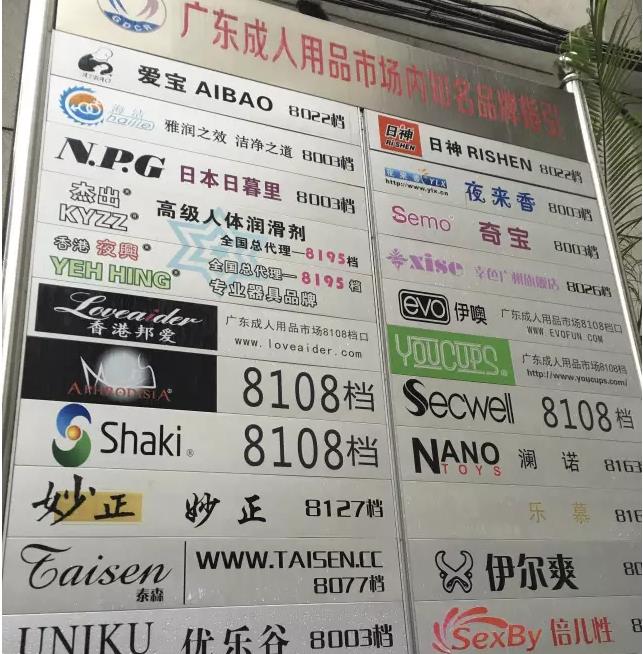

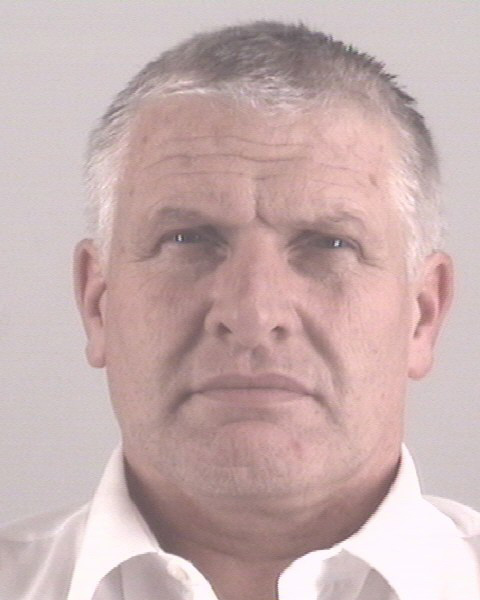





![[PCソフト] Windows 10 Enterprise Version 1607 (Updates Jul 2016)](http://i.imgur.com/vJg3vh9.jpg)

